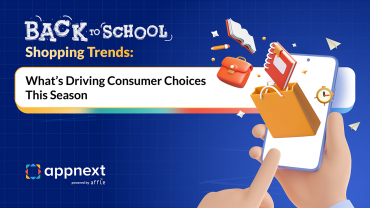Understanding the Lifetime Value (LTV) of app users is key for app developers aiming to create a sustainable, profitable business. Whether they are gaming apps, subscription-based services or free apps monetized through advertising, the essence of an effective growth strategy should focus on maximizing user LTV through acquisition, engagement, and retention efforts.
Lifetime Value encapsulates the entire value a user contributes during their relationship with an app. It estimates the total net revenue, both direct and indirect, that a user is expected to generate throughout their lifecycle.
But LTV is more than just a financial metric: it also represents user loyalty, engagement levels, advocacy potential and the expected longevity of their interaction with an app. Users with high LTV not only contribute significantly more revenue but also tend to promote an app through word-of-mouth, enhancing organic growth.
For developers, cultivating a sizable user base with high LTVs is instrumental in achieving sustainable, scalable business growth. It allows for more efficient allocation of user acquisition and marketing budgets, focusing spend on strategies that attract and retain high value users contributing to long-term profits.
Deciphering LTV Metrics and Calculations
Working out individual user LTV involves calculating several key metrics:
- ARPU (Average Revenue Per User): Total revenue divided by total number of users over a period.
- Retention Rate: Percentage of users that continue engaging with the app over set time periods.
- Lifetime Duration: The average period a typical user remains active on the app, from onboarding to churn.
- Discount Rate: Accounting for the time value of money, as present revenue is worth more than future revenue.
These parameters are fed into multi-factor LTV prediction models that generate actionable insights to guide developer decisions on optimal user acquisition channels, responding to trends across geographic markets, demographic segmentation and individual user behavior.
Maximizing LTV with Appnext’s Integration
Leveraging Appnext’s cutting-edge mobile discovery solutions can significantly boost an app’s user LTV through:
- Predictive Targeting of High-Value Users: Utilize Appnext’s AI-driven tech to identify likely high LTV users based on their preferences and behaviors across apps. Targeting these users optimizes user acquisition budgets.
- Enhanced Engagement and Retention: Appnext’s product suite provides personalized recommendations that keep users engaged by offering relevant apps catering to their interests and needs, at the moment that matters, thereby prolonging their lifecycle.
- 360° view over the campaign: Gain actionable insights from Appnext’s self-serve platform with real-time insights into KPIs. These allow fine-tuning and optimization engagement approaches to maximize retention.
Strategies for Non-Gaming Apps to Drive LTV
While the gaming sector garners significant attention for LTV enhancements, non-gaming apps also present untapped opportunities, especially subscription-based services, through strategies like:
- Multi-tiered Dynamic Pricing: Cater to diverse users through flexible pricing models balancing affordability and premium offerings, elevating conversion rates.
- Value Proposition through Bundling: Sweeten perceived value by bundling features or service tiers, incentivizing longer subscription commitments, and reducing churn.
- Loyalty and Retention Programs: Design exclusive loyalty perks or content for subscribed users to increase the appeal of subscription renewal.
- Referral Marketing: Spark organic viral campaigns via referral programs rewarding users to share apps within their social networks, garnering new potentially high LTV users.
Actionable Tips for Elevating LTV
Beyond pricing tactics and subscription optimization, all-encompassing strategies spanning acquisition to retention are instrumental for LTV maximization:
- Behavioral User Cohort Analysis: Categorize users by behaviors to specialize engagement approaches targeting high-value cohorts.
- Optimized Onboarding Flows: First impressions matter. Guide new users through immersive onboarding that hooks them in for the long run.
- Personalized Engagement Features: Customize experiences via data and feedback, catering to individual user needs for relevance and delight.
- Rapid Innovation Cycles: Continuously iterate on features and UX through feedback loops, responding swiftly to market trends and user voices.
Implementing an LTV Focused Plan
Optimizing for long-term user LTV is important for any app developer’s overarching strategy. It requires a multifaceted approach spanning user acquisition, onboarding, engagement, and retention efforts. By partnering with Appnext, developers and marketers can unlock the full lifetime value potential of their user base.




Comments are closed.